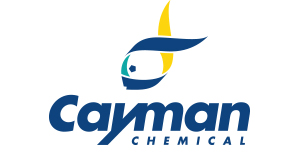K-Ras Isoform A (G12C mutant; human, recombinant)
K-Ras Isoform A (G12C mutant; human, recombinant)
SKU
CAY40371-100
Packaging Unit
100 µg
Manufacturer
Cayman Chemical
Availability:
loading...
Price is loading...
Formulation: 20 mM HEPES, pH 7.4, 150 mM NaCl, 1 mM DTT
Purity: ≥88% estimated by SDS-PAGE
Formula Weight: 0
Shelf life (days): 180
Notes: K-Ras is a small GTPase and member of the RAS family of GTPases with roles in apoptosis, as well as cell proliferation, survival, and migration.{66623,31183} K-Ras is composed of a guanine nucleotide binding domain containing an active site, an effector binding domain, and an isoform-specific C-terminal hypervariable region, which varies by four amino acids between isoforms A and B.{66623,54879} The active site cycles between GDP-bound inactive and GTP-bound active states and is regulated by its associations with GTPase-activating proteins (GAPs) or guanine nucleotide exchange factors (GEFs).{54879,2798} K-Ras is ubiquitously expressed and is tethered to the intracellular side of cell membranes via farnesyl and palmitoyl lipidation.{66623,31741} The glycine-to-cysteine substitution at position 12 mutant K-Ras (K-Ras(G12C)) is constitutively active and found in pancreatic, colon, and lung cancers.{52771,31183} Inhibition of K-Ras(G12C) with a cysteine-targeted inhibitor ARS1620 (Item No. 27915) reduces tumor volume in K-Ras(G12C)-expressing, but not K-Ras(G12V)-expressing, MiaPaCa-2 pancreatic cancer mouse xenograft models.{45274} Tumor levels of K-Ras(G12C) are increased in patients with lung adenocarcinoma who reported to be former or current smokers.{66624} Cayman's K-Ras Isoform A (G12C mutant; human, recombinant) consists of 185 amino acids and has a calculated molecular weight of 23 kDa. By SDS-PAGE, the apparent molecular mass of the protein is 25-26 kDa due to glycosylation.
Purity: ≥88% estimated by SDS-PAGE
Formula Weight: 0
Shelf life (days): 180
Notes: K-Ras is a small GTPase and member of the RAS family of GTPases with roles in apoptosis, as well as cell proliferation, survival, and migration.{66623,31183} K-Ras is composed of a guanine nucleotide binding domain containing an active site, an effector binding domain, and an isoform-specific C-terminal hypervariable region, which varies by four amino acids between isoforms A and B.{66623,54879} The active site cycles between GDP-bound inactive and GTP-bound active states and is regulated by its associations with GTPase-activating proteins (GAPs) or guanine nucleotide exchange factors (GEFs).{54879,2798} K-Ras is ubiquitously expressed and is tethered to the intracellular side of cell membranes via farnesyl and palmitoyl lipidation.{66623,31741} The glycine-to-cysteine substitution at position 12 mutant K-Ras (K-Ras(G12C)) is constitutively active and found in pancreatic, colon, and lung cancers.{52771,31183} Inhibition of K-Ras(G12C) with a cysteine-targeted inhibitor ARS1620 (Item No. 27915) reduces tumor volume in K-Ras(G12C)-expressing, but not K-Ras(G12V)-expressing, MiaPaCa-2 pancreatic cancer mouse xenograft models.{45274} Tumor levels of K-Ras(G12C) are increased in patients with lung adenocarcinoma who reported to be former or current smokers.{66624} Cayman's K-Ras Isoform A (G12C mutant; human, recombinant) consists of 185 amino acids and has a calculated molecular weight of 23 kDa. By SDS-PAGE, the apparent molecular mass of the protein is 25-26 kDa due to glycosylation.
| SKU | CAY40371-100 |
|---|---|
| Manufacturer | Cayman Chemical |
| Manufacturer SKU | 40371-100 |
| Package Unit | 100 µg |
| Quantity Unit | STK |
| Product information (PDF) | Download |
| MSDS (PDF) |
|

 Deutsch
Deutsch








